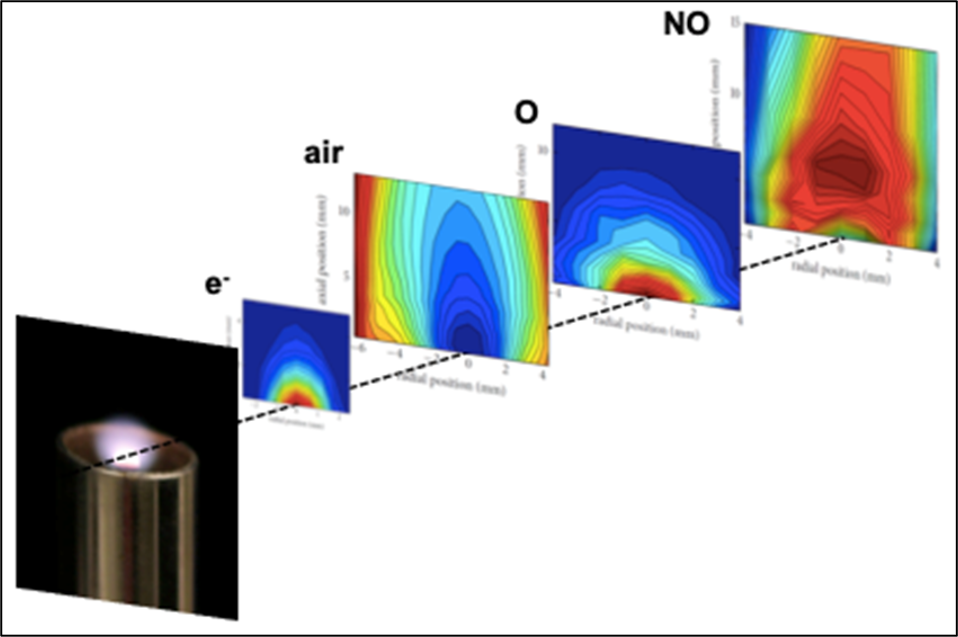
Diagnostics of non-equilibrium plasmas in gaseous, liquid, and interfacial states
The complexity of non-equilibrium plasmas is reflected in the state of the art in diagnostics that are used in their study. Diagnostics are often performed with a temporal and spatial resolution of a few nanoseconds and a few microns. The non-equilibrium properties of the plasma often result in intrinsic complications in the interpretation of the diagnostics. For example, the highly collisional environment complicates interpretation of nearly all diagnostics, from electric probes to optical spectroscopy and mass spectrometry. In addition, many atmospheric pressure plasmas consist of numerous, often random, filamentary discharges which are inherently transient in nature and with a characteristic size on the order of 100 microns. Often such plasma filaments need to be stabilized to perform temporal and spatial resolved diagnostics.
Our group has expertise in a large range of plasma diagnostics. We routinely perform laser induced fluorescence (LIF) and two-photon absorption laser induced fluorescence (TaLIF) that allow in situ measurements of OH, NO, O, H, and N species. In addition, we perform a large range of laser scattering experiments including Rayleigh scattering, Raman scattering, and Thomson scattering that allows the measurement of key plasma parameters such as the electron temperature and density and the gas temperature and density. In addition, our group also has extensive expertise in optical emission spectroscopy, UV/Vis/NIR absorption spectroscopy, and mass spectrometry.
Further reading:
- P. Bruggeman and R. Brandenburg. “Atmospheric pressure discharge filaments and micro-plasmas: physics, chemistry, and diagnostics,” J. Phys. D: Appl. Phys., 46 (2013), 464001.
- P. Bruggeman, N. Sadeghi, D.C. Schram, and V. Linss. “Gas temperature determination from rotational lines in non-equilibrium plasmas: a review,” Plasma Sources Sci. Technol., 23 (2014), 023001.
